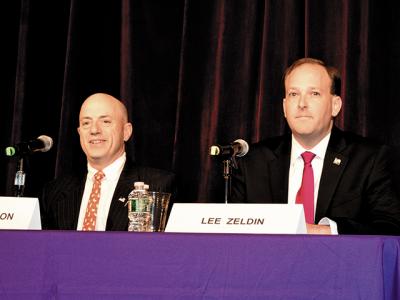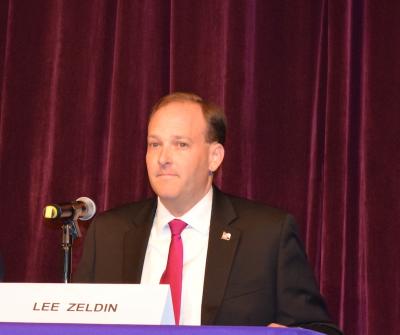Creating a More Perfect Amagansett
Creating a More Perfect Amagansett

A pedestrian and cyclist-friendly Amagansett characterized by its walkability is the long-term goal, as outlined by the hamlet study that will be the subject of a public hearing at the East Hampton Town Board’s meeting tonight at 6:30. The hearing will be held in the Town Hall meeting room.
“The consulting team prepared illustrative master plans for Amagansett’s commercial centers that are meant to capture the community’s shared vision of a preserved historic Main Street hamlet center” and a complementary, service-oriented and pedestrian-friendly eastern business district, according to a report issued in January by the consultants engaged to study each of the town’s hamlets, Peter Flinker of Dodson and Flinker, a Massachusetts consulting firm, and Lisa Liquori of Fine Arts and Sciences, a former town planning director.
Protection of the farmland north of the hamlet’s center; new mixed-use buildings clustered within a landscaped, pedestrian-only zone; parking consolidated across several lots and sharing access, and extended pedestrian links are among the recommendations for the hamlet’s commercial center, as proposed by the consultants. A solution to wastewater treatment that would allow the addition of second-story apartments to existing buildings is another. The town might rebuild the municipal parking lot north of Main Street with a bioswale to capture and filter runoff, with new trees for shade, the consultants suggested. And pedestrian paths and plazas might replace unnecessary curb cuts and driveways.
“One of the ongoing economic issues in Amagansett is the lack of affordable worker housing near the commercial centers,” the report said. “Even many of the business owners in these commercial areas are increasingly unable to afford real estate in the hamlet. Providing lower-cost housing in the hamlet is therefore linked to the long-term viability of these businesses.”
In the area of Amagansett’s Long Island Rail Road station, east of the business district, the consultants proposed relocating the station’s entrance farther to the east and adding parking spaces, “pocket parks,” and landscaping in transition areas. Parking on the north side of the railroad track, with a separate pedestrian crossing of the track, should be considered, the report said.
The awkward intersection of Old Stone Highway, Abram’s Landing Road, and Montauk Highway, over which the railroad track also crosses, should be realigned, the study concluded, and the Bistrian building materials yard might be relocated and replaced with a mixed-use structure that could be an attractive landmark at the hamlet’s eastern entrance.
Farther east, around the I.G.A., the supermarket’s existing parking lot could be replaced with a new interior street with angled and parallel parking, sidewalks, and street trees. New mixed-use structures along the street frontage would reflect the character of the hamlet’s center, and a small park or plaza could serve as a focal point. A continuous parking area across lot lines would provide for parking and circulation behind stores. Proposed housing east of the I.G.A. complex should be situated farther from the road to create a larger mixed-use recreation field and preserve the view from the road, the report said.
Some participants in the information-gathering stage of the hamlet study expressed the hope that the sidewalk on the south side of Montauk Highway could be widened to accommodate bicyclists. Adding and improving crosswalks was another theme.
Public hearings were held for the Wainscott hamlet study on Oct. 4, and East Hampton’s on Oct. 18. Hearings will continue at the board’s Nov. 15 meeting, at which Springs will be considered, and at its meeting on Dec. 6, when a public hearing is scheduled for Montauk’s hamlet study.
The studies began in 2015, with public input beginning the following year. The consultants have presented updates since then based on public comment from individuals, the hamlets’ citizens advisory committees, chambers of commerce, and East Hampton Village. The goal is to adopt recommendations for each hamlet to be incorporated into the town’s comprehensive plan.





